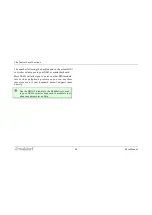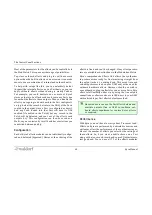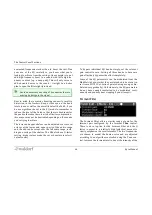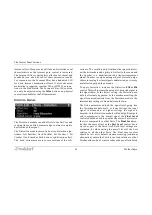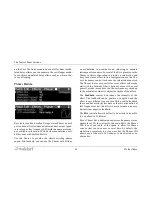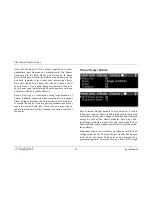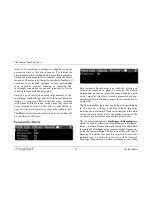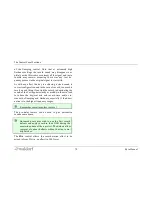
The Control Panel Sections
71
Waldorf Kyra
levels of Chorus/Flanger settings can slightly round the
percussive start to fast attack sounds. If you want the
utmost in fast attack sounds, keep the mix levels and delay
times used in the module low or consider using the Phaser
instead as Phasers are not delay-based effects. Similarly, if
you want to avoid pitch variation on very pure sounds
such as pianos, consider reducing or removing Cho-
rus/Flanger modulation (speed and intensity) as well as
reducing the feedback and delay time.
Keep an eye on levels when using large amounts of Cho-
rus/Flanger feedback (e.g. over 80) when configured for
flanger or comb type effects, especially when combined
with resonant filter settings. Large peaks will cause the
Output Limiter to kick in. If this effect is undesirable, re-
duce Patch level or alternatively, reduce the feedback level.
The
Mix
control allows the effect to be mixed in from 0%
(i.e. no effect) to 100% wet.
Reverberation Module
Kyra features a Reverb module on each Part offering re-
verberation times up to about 20 seconds. The Reverb
module does not have presets like many standalone units
do but many of the classic reverb parameters are sup-
ported such that the sound of many classic reverbs can be
configured.
The Reverb module features a pre-delay unit providing up
to one second of delay. Pre-delay extends the delay
between the initial sound (early reflections) and the main
reverb tail and is useful to give the sound some space. The
pre-delay can also achieve sounds like a gated reverb.
The two coloration controls,
Darkness
and
Damping
have
similar but subtly different effects. Darkness is implemen-
ted as a low pass filter on the wet-path input to the reverb.
Increasing the Darkness value removes higher frequencies
giving the reverb a deeper, darker tone. On the other hand,
Damping is a similar low pass filter but is in the reverb's
feedback loop. As such the reverb tail will be ‘damped’
(lose high frequencies over time) according to the setting




